Commercial Motor Vehicles – What You Need To Know in 2023

Hop on the highway, and you will see many trucks and vans operating as commercial motor vehicles. But what precisely is a commercial motor vehicle, what do they do, and what safety regulations are in place?
In this guide, learn more about how a company can transport everything from passengers to hazardous materials in vehicles. Discover the commercial driver’s license required of drivers and the dangers and regulations in place to keep the road safe. By the way, if you operate a large truck or another commercial motor vehicle, we have a Cargo Securement video to help keep you safe on the road, and you should check that out.
Commercial Motor Vehicle (CMV) Definition
What is considered a commercial motor vehicle? There are two definitions to consider. Each definition of a CMV must fulfill certain gross vehicle weight rating requirements, but the primary distinctions are these:
- Any vehicle used to transport passengers, goods, or materials for motor carriers on a highway or for interstate commerce.
- Vehicles that meet the weight requirements, generally large trucks, are owned by motor carriers and operated on any roads, including intrastate commerce.

The Requirements to Be a CMV
As you can see above, the definition of a commercial motor vehicle may encompass both interstate and intrastate commerce and operate for a company for compensation.
Is that all there is to it? No — some other considerations determine what vehicles are considered commercial motor vehicles.
Here are the additional requirements below.
Passenger Capacity and Rules
Commercial motor vehicles include those with a certain minimum capacity for carrying passengers, including the driver for compensation.
There are two potential capacities to meet to be considered a commercial vehicle:
- Built for carrying 8 passengers, including the driver. This must be for compensation.
- Designed for transporting more than 15 passengers (16 or more). Again, this includes the driver, but not necessarily for compensation.
Transporting Hazardous Materials
Under 49 CFR, the Secretary of Transportation regulates the transportation of hazardous materials and the quantities requiring placards (warnings to others that the vehicle contains a hazardous material).
If vehicles meet these quantities while transporting these materials, they’re immediately considered commercial motor vehicles.
Gross Vehicle Weight Rating
Gross vehicle weight rating is the weight of a vehicle when appropriately fully loaded with people or goods. The gross combination weight rating is used when including a towed motor vehicle.
Commercial motor vehicles must meet the minimum gross vehicle weight rating based on the different definitions.
For 49 CFR 390.5 definition of a CMV:
- Gross vehicle weight rating of over 10,000 pounds. This may also be the gross combination weight rating (whichever is the larger rating)
- For 49 CFR 383.5 definition of a CMV, there are different groups:
- Group A — A combination vehicle with a gross combination weight rating of more than 26,000 pounds, and the towed vehicle must be at least 10,000 pounds
- Group B — Weight rating of more than 26,000 pounds
- Group C — This doesn’t meet the weight requirements of groups A or B but does meet the passenger or hazardous material requirements listed above.

Ownership
Whether they be small vans or large trucks, the CMV definition includes any owned or leased vehicle that a company uses for transporting people or goods. The same vans that individuals may own will be treated as commercial motor vehicles when they are performing these key actions on behalf of motor carriers for business.
All of these conditions and how they are met will determine the commercial driver’s license needed to operate a commercial vehicle legally.
Commercial Motor Vehicle Compliance and Regulations
Once determined to be commercial motor vehicles, motor carriers must meet the laws and regulations set forth by state and federal authorities. This impacts how motor carriers should care for their fleets and prepare their drivers. If you want to check out our whole list of truck driving safety tips, we also offer lots of information on that topic.
Below are the necessary regulations to consider for proper compliance.
Federal Motor Carrier Safety Regulations
Federal regulations as part of the Federal Motor Carrier Safety Administration are instrumental in keeping roads safe through federal laws. If deemed a CMV under federal law, they must adhere to the entirety of 49 CFR Parts 300-399. This covers everything from inspection and maintenance requirements for the equipment to employee training and safety.
Some vehicles don’t fall under the FMCSA regulations, including:
- Military Vehicles
- Farm Vehicles
- Fire Trucks
- Emergency Vehicles
While these may be used to transport both people and equipment, there are special exemptions for their status. These are large trucks, but commercial driver’s license requirements vary as they’re operated by those who need specialized training.
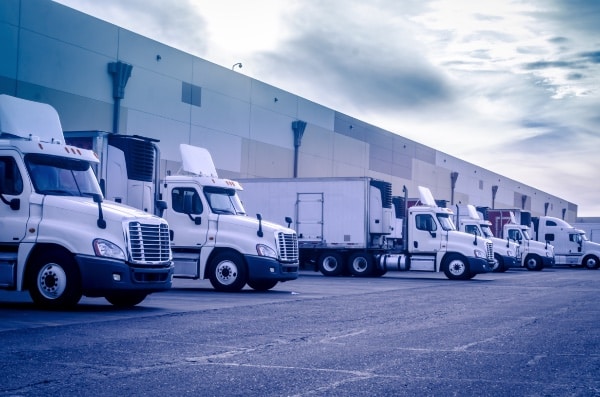
Driver Regulations
All equipment must be up to code, but drivers must also follow the appropriate compliance measures before getting behind the wheel of a CMV.
In a later section, the requirements for a commercial driver’s license (CDL) will be covered in detail. However, these are the various classes of licenses that drivers must obtain, depending on the truck they intend to operate.
Class A CDL
For operating a gross vehicle weight of more than 26,000 pounds and a towed weight of over 10,000 pounds, a Class A license is required. Because of the heavy weight of the equipment, this is perhaps the most difficult license to get.
Some examples of what you could operate with this license include:
- Tractor Trailers
- Livestock Carriers
- Trucks and Trailers Combinations
- Flatbeds
- Tank Vehicles
Class B CDL
If the towed weight is less than 10,000 pounds, but the gross combination weight is over 26,000 pounds, you’ll only need a Class B license. You won’t be driving the largest loads, but you’ll still have a lot to handle. These operations include:
- Straight Trucks/Box Trucks
- Large Passenger Buses
- Dump Trucks (small trailers)
CLASS C CDL
With this license, you can transport hazardous material or 15 other riders in addition to yourself. This will likely be smaller rides like vans, making the difference in driving less drastic than tractor trailers, but it will still take greater focus than your average pickup truck.
With this license, you can operate:
- Passenger Vans
- Combination Setups Below the Weight Requirements of A and B Class
- Smaller HazMat Trucks and Vans
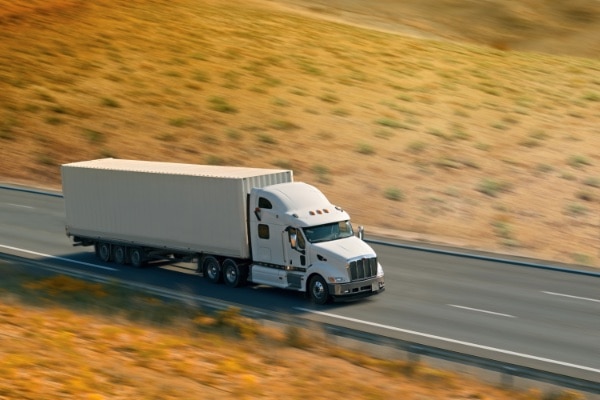
Registration
Suppose your truck or van meets the gross vehicle weight standards of a commercial vehicle according to the Federal Motor Carrier Safety Association (FMCSA) and will at any time pass state lines. In that case, it will need a USDOT number.
Registration can easily be completed online with the FMCSA. Have all documents for your commercial motor vehicle ready to make the process go as smoothly as possible.
State Compliance
In addition to meeting federal regulations, commercial vehicles must also comply with local and state regulations. You may need to confirm whether your CMV is considered commercial in your state. If so, you’ll need to meet local inspection and maintenance requirements and register your truck or van.
Even if you registered your vehicle with the FMCSA, you still register with the local authorities for a local DOT number.
Uses of a Commercial Motor Vehicle (CMV)
Many focus on the requirements of the gross combination weight rating with a towed unit to determine the CMV definition. However, an important part of the definition is the purpose and how the CMV is used. A company may rely on a CMV for many reasons. These reasons determine not only the best type of CMV for their purposes but also what unique regulations may be in place.
Below are examples of why companies may rely on a CMV for business.
Transport Goods
Perhaps one of the most popular uses of commercial vehicles is to transport goods. The larger the truck, the more it will be able to transport in one trip while also carrying bulkier items that may not easily fit in smaller delivery vans.
During transportation, trucks must be weighed to ensure they aren’t exceeding their maximum weight capacity as a safety precaution.

Transporting Material Found to Be Hazardous
Hazardous materials come in many forms, including liquids, gases, solids, and sludges. They may be a byproduct of manufacturing and industrial processes. They must be removed from the site securely to ensure safety for those working at the site. However, they must also be transported carefully to avoid harming people along the way to their destination. This calls for specialized commercial vehicles and regulations.
Transport Passengers
Commercial vehicles may be used to transport passengers, and motor carriers receive compensation for the service. This may be on buses or passenger vans. If the carrier can hold 15 riders plus the driver, it cannot be considered a passenger automobile.
Intrastate Commerce
Intrastate commerce, as opposed to interstate commerce, is trucking conducted within one state’s borders., The load starts in one state and doesn’t leave the state to reach its destination. Motor carriers may choose to conduct only intrastate deliveries to avoid the additional fees or if they only have vendors and sales made within one state.
Interstate Commerce
Unlike intrastate commerce, interstate commerce requires crossing state lines, even temporarily, to complete deliveries. If commercial vehicles conduct any interstate commerce, they will need to adhere to federal regulations and have a USDOT number. This is often preferable as motor carriers can grow their profits as they reach new customers across state lines.
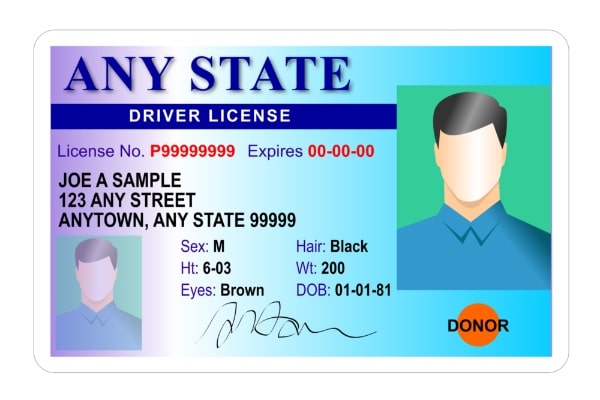
How to Get a Commercial Driver’s License (CDL)
Driver qualifications are a crucial part of operating a commercial vehicle in accordance with compliance and regulation requirements set by the states and the federal government. To transport passengers or property with a CMV, a driver must undergo the training and exams that grant them the appropriate class of license for each truck they operate: Class A, B, or C.
1. Pass the Standard Driver’s Test
Before earning a commercial license, drivers first need a regular license for operating passenger automobiles. This will require taking a written exam, completing a driver’s permit period, and then passing the regular driving exam. This will usually be done with an automobile of the driver’s choice, meaning it can be a sedan, pickup truck, or another passenger car.
2. Get a Commercial Learner’s Permit
Once drivers have a regular license, they can begin the process of earning a commercial license. First, they will need to apply for a learner’s permit, similar to a regular license. With this permit, drivers can practice operating commercial vehicles on public roads as long as a CDL holder is in the passenger seat.
3. Complete Training for a Commercial Driver’s License (CDL)
With a permit, drivers are now ready to undergo an official training program to learn the proper operation of commercial vehicles. Training programs must be approved by the Federal Motor Carrier Safety Administration.
If drivers want an S endorsement that allows them to drive a school bus, drivers must also undergo background checks at this point.
They can also apply for the following endorsements:
- P: Allows drivers to drive a passenger CMV (this is a prerequisite to an S endorsement)
- H: Permits drivers to transport hazardous materials (flammable liquids, radioactive substances, explosives, etc.)
- T: Allows drivers to operate tanks with liquid cargo

4. Pass the Skills Test and Receive Your Commercial Driver’s License (CDL)
With a training program and endorsements applied, drivers must pass a skills test, showing they have the ability to operate commercial vehicles safely and effectively. This typically includes:
- CMV Inspection (Drivers must be able to perform an inspection of their commercial vehicle and determine if it’s safe to drive.)
- Basic Controls and Backing Maneuvers
- Driving Skills on the Road
- Once they receive their license, drivers can operate vehicles for commercial purposes and above passenger size limits.
5. Maintain a Driver Qualification File (DQF)
In commerce, to transport passengers, goods, or property, a driver qualification file (DQF) must be kept to be in compliance with regulations. Though “driver” is in the name, this is on the motor carrier to maintain. This must be completed and maintained for each driver to continue the operation of a CMV. The file should include:
- The Application for Employment
- Safety Performance History Inquiry to Previous Employers
- Driver’s Motor Vehicle Record from State Agencies and the Motor Carrier’s Annual Review of the Record
Types of Commercial Motor Vehicles
A self-propelled or towed motor vehicle used to transport passengers or property is a CMV, but this is a broad classification that encompasses many types of vehicles.
To give you an idea of what might fall under this classification and their purposes, these are the most common vehicles that are included in the definition of a CMV.
Box Trucks or Straight Trucks
Box trucks and straight trucks are two names for the same commercial trucks. These don’t have a detachable trailer but are large and meant for bigger boxes. These are most commonly used by moving companies or for transporting appliances and furniture.

Tow Trucks
This is a truck with winches and hoist mechanisms to transport other cars. Due to the weight of the load and that they transport property for a company, these are considered CMVs, though they are more common in intrastate use than in interstate commerce.
Motor Coaches
Motor coaches carry passengers for compensation. These are typically long buses but intended for longer distances, has a baggage compartment under the elevated passenger deck, and are often for private use.
Travel Trailers
Travel trailers may not always be used for commerce, but due to their size, they must follow many of the regulations put forth by the federal government.
Semi Trucks
Big rigs and semi trucks are the quintessential images of commercial motor vehicles. Their large size guarantees they meet the weight requirements, and they are used almost exclusively for interstate commerce.

Other
Many other vehicles are considered CMVs depending on the various requirements they meet. Whether they have a larger weight or are used to transport goods, passengers for compensation, hazardous materials, and more, these are CMVs. For example, these may be vans used as delivery trucks or pickup trucks used for a company.
The Dangers of a Commercial Motor Vehicle (CMV)
Federal Motor Carrier Safety regulations are designed to keep everyone on the road safe from the dangers of large commercial motor vehicles.
But are they truly more dangerous than a passenger car? Yes, and here are just some of the reasons why.
Longer Braking Distance Required
Due to their larger gross vehicle weight, these vehicles cannot come to as fast of stops as passenger cars. They need more space to brake, meaning what would be a fast stop and forgotten for a sedan could mean a crash with a truck.

More Force
With the gross vehicle weight of big rigs and box trucks, the crashes they are involved in are much more severe because of the greater force their weights bring.
Less Space for Maneuvering and Avoiding Accidents
The larger the vehicle, the less space there is to maneuver. This means drivers are less likely to be able to avoid accidents.
Driver Fatigue
To operate vehicles with such a large weight, as per the CMV definition, takes great skill and focus. Drivers may be pushed to continue driving beyond when their bodies should, and it’s time to rest in order to get jobs done on time. When drivers are more tired, they’re more likely to make catastrophic mistakes.
Overloading
Gross combination weight rating determines the class of a self-propelled or towed unit. There are eight classes of vehicles based on the gross vehicle weight rating, with class 1 being the smallest in gross combination weight at only 6,000 pounds max. At the other end of the spectrum, a class has a gross vehicle weight rating of over 33,000 pounds.
Motor carriers may be tended to overload so that fewer trips are required to transport goods. However, this jeopardizes the truck’s stability and could cause a major accident.
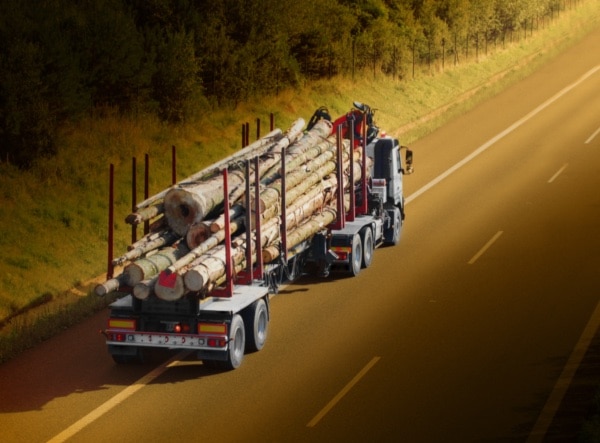
Factors in Commercial Vehicle Crashes, Injuries, and Fatalities
Safety training is designed to teach drivers what they should and shouldn’t do on the road. But that doesn’t mean everything happens by the book. Here are some examples of how safety regulations can be forgotten and lead to accidents.
Occupants (Passengers & Including the Driver) Not Wearing Seatbelts
The safest way to travel is for all passengers, including the driver, to wear a seatbelt. Unfortunately, passengers often forego this safety measure, and even drivers may leave it off as well. To increase safety, everyone with a seatbelt accessible should wear one.
Rural Environments
In urban environments, drivers are often more on guard as they deal with more traffic and activity. This may mean they pay less attention in rural environments. However, as they pay less attention, accidents are more likely, causing rural environments to be a common place for crashes with CMVs.
Drivers should pay just as much attention, even outside of large cities.
Work Zones
Work zones present many problems:
- Lanes may change abruptly
- Lanes are more narrow
- other cars are trying to swerve around large trucks to quickly exit the work zones
- Drivers must stay extra alert in work zones to stay safe.
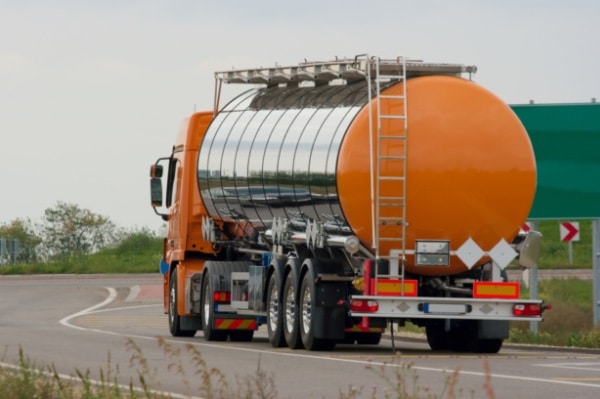
Distracted Driving
Just as with passenger cars and pickup trucks, drivers can get a little too comfortable behind the wheel of commercial trucks. This may lead to behaviors that distract them from the road, like eating while driving or using cell phones, leading to accidents. To improve safety, drivers should remain focused on the road during vehicle operations.
Frequently Asked Questions About Commercial Motor Vehicles
What Is Classed As a Commercial Vehicle?
There are two definitions that can be applied to determining if a vehicle is a CMV. If the vehicle is used for interstate commerce, then it’s a CMV. In this case, even pickup trucks fall under the definition.
Additionally, a vehicle that’s more than 10,000 pounds or transports more than eight people, including the driver, for compensation it’s also a CMV.
What Constitutes a Commercial Vehicle in CT?
To be considered a commercial motor vehicle in Connecticut, a CMV must meet these requirements:
- Has a vehicle weight rating of 26,001 or more pounds
- It’s designed to transport 16 or more passengers (this includes the driver) or 11 or more passengers with the driver and is used to transport students to and from school who are under the age twenty-one years of age
- Transports hazardous materials
What Does Florida Consider a Commercial Vehicle?
Below are the requirements to be considered a commercial motor vehicle in Florida:
- The vehicle isn’t owned by the government,
- The vehicle has a gross weight of more than 26,000 pounds,
- Has three axles or more (even if it has a gross vehicle weight rating of fewer than 26,000 pounds), or
- Uses a combination trailer and has a gross combination weight of more than 26,000 pounds.

Why Is It Called a Commercial Vehicle?
These vehicles are commercial because they perform services for a company, participating in commerce or commercial activities.
Compare this to a passenger car which is used by an individual for their own personal purposes. They are not part of a company earning profit for transporting riders or goods.
What Is an Example of a Commercial Vehicle?
When you think of the larger trucks and vans you may see on the road, there’s a higher likelihood they’re part of the CMV classification. If it’s performing a service for a company to transport passengers or property, it’s a commercial motor vehicle.
This may be tow trucks, semi trucks, or delivery vans.
What Is the Difference Between a Commercial and Passenger Vehicle?
When motor carriers own a CMV, this means it meets the weight requirements without or with a towed unit included. They may be used to transport hazardous materials or passengers for compensation. They must meet regulatory requirements and have proper commercial insurance.
A passenger car doesn’t require a commercial driver’s license, transports no more than 8 riders, and has a smaller weight.
Transport Materials, Passengers, or Property Safely with a Commercial Motor Vehicle (CMV)
Whether you’re engaging in commerce to transport passengers, goods, or property or even need a vehicle transporting hazardous materials, knowing the definition of a commercial motor vehicle is crucial. This will ensure that your company is in compliance with federal and state regulations.
Remember to keep every driver qualified with the proper commercial driver’s license and qualification file and ensure your commercial motor vehicle fleet is maintained and safe to operate.